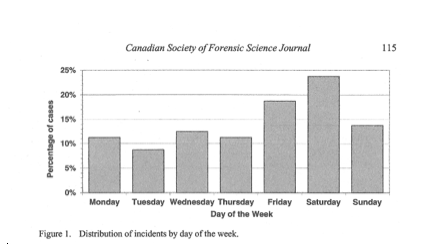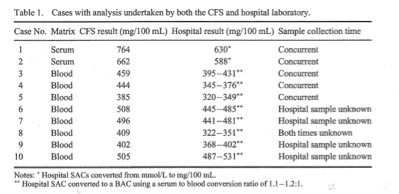Ethyl Alcohol Study: Top 80 Over 80 Research
Ethyl alcohol impairment takes centre stage in the groundbreaking “Top 80 Over 80” research from the Centre of Forensic Sciences. This pivotal study, analysed by Wigmore on Alcohol, delves into the most extreme ethyl alcohol blood concentrations ever recorded in Canadian driving cases, revealing startling facts about high-level intoxication and operational ability.
Our team at Wigmore on Alcohol provides expert analysis on this critical ethyl alcohol research. My colleagues, J.P. Palmentier and Rachel Wallage, at the Centre of Forensic Sciences in Toronto have published a study that examined the highest BACs found in 80 drivers in Ontario between 1988 and 2007. It has the catchy title of “Top 80 Over 80” which refers to the BAC limit in Canada of 80 milligrams of alcohol in 100 millilitres of blood. The title wouldn’t be nearly as catchy using the American format of .08 g/100mL (i.e. Top 80 over .08).
Methodology of Ethyl Alcohol Analysis
Typically the blood or serum samples were seized at hospital as part of the police investigation or as a result of a blood demand. All samples were analysed at the Centre of Forensic Sciences in duplicate by headspace gas chromatography using t-butanol as an internal standard. This gold-standard method for ethyl alcohol quantification ensures precise and legally defensible results.
There were 70 whole blood samples and 10 serum/plasma blood samples analysed. The mean BAC was 428 mg/100mL (range 382-570 mg/100mL). The mean serum alcohol concentration was 532 mg/100mL (range 445-764 mg/100mL). The SACs were converted into a BAC using a conversion ratio between 1.1 and 1.2.
Other Volatiles Detected Alongside Ethyl Alcohol
The analysis frequently detected other volatile compounds alongside the primary ethyl alcohol content.
- Methyl alcohol (a sign of alcohol abuse), was detected in 2 cases (0.004 and 0.012 g/100mL).
- Acetone was detected in 22 cases (maximum concentration was 0.002 g/100mL).
- Isopropyl alcohol (a metabolite of acetone) was detected in 3 cases (maximum concentration was 0.002 g/100mL).
Characteristics of High Ethyl Alcohol Concentration Drivers
The data paints a clear profile of drivers with extreme ethyl alcohol levels.
-
- Gender: 84% male
- Age: Mean age was 44 years (range 24 to 65 years)
- Collisions: 73% were involved in motor vehicle collisions and 59% in single MVCs
- Time of Day: Peak time of driving was between 3:00 p.m. and 6:00 p.m.
- Day of Week: Driving tends to be evenly distributed throughout week (see graph)

Critical Comparison: Hospital vs. Forensic Ethyl Alcohol Results
In 10 cases both the hospital and forensic laboratory conducted an alcohol analysis. The results demonstrate a significant variance in ethyl alcohol measurement accuracy.

The hospital alcohol analyses were conducted by an enzymatic method and showed lower results than by the gold standard of headspace GC. This may be due in part to the saturation of the enzymes at these high BACs resulting in lower results. This underestimation of ethyl alcohol concentration has major implications for legal proceedings.
In 2 cases both blood and breath analyses were conducted and the breath tests (Intoxilyzer 5000C) were lower than the actual BAC, due in part to the low calibration ratio of 2100:1 applied by breath alcohol testing instruments.
Conclusions on Extreme Ethyl Alcohol Levels
The conclusion of the authors were:
The BACs reported in this study are sufficient to cause death in the majority of individuals; yet, these individuals were still able to operate a motor vehicle to some degree. Almost half the drivers showed no physical signs of alcohol intoxication. Noteworthy, in our study was a 33 year-old-male with a SAC of 764 mg/100mL, which represents a BAC equivalent to 637-695 mg/100mL.
This BAC represents one of the highest reported in the drinking and driving literature and is approximately eight times the per se limit for driving in Canada and approaches twice the concentration typically associated with alcohol-induced fatalities. Cases where hospital analysis or breath testing was undertaken in addition to alcohol analysis demonstrate that at the high levels observed in this study, these methods of alcohol analysis typically underestimated the actual ethyl alcohol concentration.
This ethyl alcohol research underscores the critical need for precise forensic toxicology in impaired driving cases. The team at Wigmore on Alcohol leverages this data to inform legal defences and public understanding. For expert consultation on cases involving ethyl alcohol, contact our office.
Contact us for a free forensic evaluation now!
References
Wigmore, J.G., Blog- “Drinking and Driving- Not Just a Night Thing”, October 1. 2013
Wigmore, J.G., Posting, “High BAC Drivers Who Should be Dead”, LinkedIn, November 22nd, 2014
Ethyl Alcohol Study FAQs
What is the "Top 80 Over 80" study
The "Top 80 Over 80" study examined the 80 highest blood alcohol concentrations (BACs) found in drivers in Ontario between 1988 and 2007.
What was the highest ethyl alcohol level found in the study?
The highest serum alcohol concentration recorded was 764 mg/100mL, which is equivalent to a blood alcohol concentration between 637-695 mg/100mL.
How was the ethyl alcohol in the samples analyzed?
All blood and serum samples were analysed at the Centre of Forensic Sciences using headspace gas chromatography with t-butanol as an internal standard.
What other substances were found alongside ethyl alcohol?
Other volatiles detected included methyl alcohol in 2 cases, acetone in 22 cases, and isopropyl alcohol in 3 cases.
What were the characteristics of drivers with high ethyl alcohol levels?
84% were male, the mean age was 44, and 73% were involved in motor vehicle collisions.
When did most of this high ethyl alcohol level driving occur?
The peak time for driving with these extreme BACs was between 3:00 p.m. and 6:00 p.m.
Did hospital tests accurately measure the ethyl alcohol levels?
No, hospital enzymatic analyses showed lower results than forensic lab tests, likely due to enzyme saturation at high BACs.
How did breath tests compare to actual ethyl alcohol blood levels?
In two cases, breath tests from an Intoxilyzer 5000C underestimated the actual blood alcohol concentration.
Why is the study called "Top 80 Over 80"?
The name refers to Canada's legal BAC limit of 80 mg of alcohol in 100 mL of blood, and the study examines drivers far over that limit.
Who conducted the "Top 80 Over 80" ethyl alcohol research?
The study was published by J.P. Palmentier and Rachel Wallage from the Centre of Forensic Sciences in Toronto.
Recent News

Ethyl Alcohol Study: Top 80 Over 80 Research
Ethyl alcohol impairment takes centre stage in the groundbreaking “Top 80 Over 80” research from...
Read More
A Toxicology Definition Perspective: Does Gastric ...
Gastroesophageal Reflux Disease (GERD) is a digestive disease that occurs in approximately 10 to 20%...
Read More
Alcohol Poisoning: Are Hospitals Releasing Drunk P...
A critical question in emergency medicine involves the potential dangers of premature discharge for patients...
Read More
The Fatal Intersection of the Drunk Driver and Alc...
Following on from my previous post, an alcohol intoxicated pedestrian not only faces an increased...
Read More